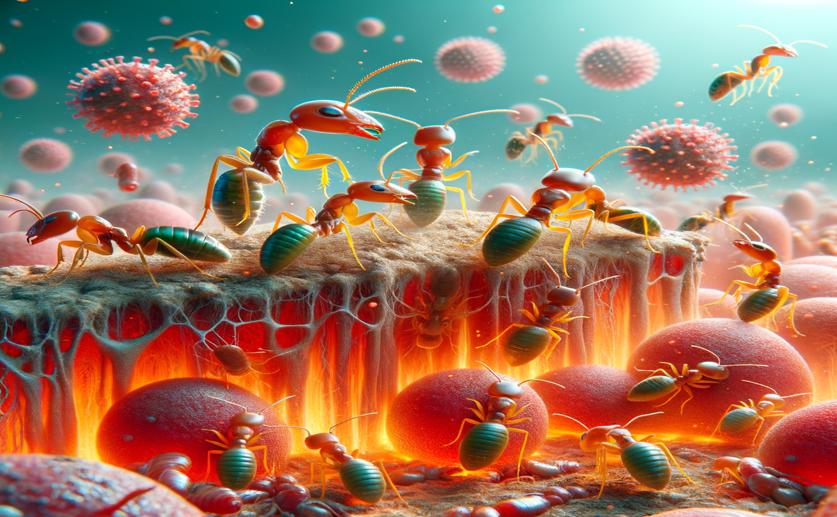
Prostaglandin A3 Reduces Worker Numbers to Control Colony Growth in Termites
Jenn Hoskins
3rd July, 2024

Image Source: Natural Science News, 2024
Key Findings
- The study by Zhejiang University focused on the termite species Odontotermes formosanus in China
- Feeding termites Magnolia grandiflora L. (MGL) branches significantly inhibited worker development, reducing the worker-to-soldier ratio (WSR)
- The inhibition was linked to increased levels of prostaglandin A3 (PGA3) in termites, influenced by higher calcium concentrations and peroxidase (POD) activity
References
Main Study
1) Prostaglandin A3 regulates the colony development of Odontotermes formosanus by reducing worker proportion
Published 2nd July, 2024
https://doi.org/10.1007/s44297-024-00030-3
Related Studies
2) Termites and Chinese agricultural system: applications and advances in integrated termite management and chemical control.
3) Medicinal components in Termitomyces mushrooms.
4) Metagenomic and functional analysis of hindgut microbiota of a wood-feeding higher termite.
Journal: Nature, Issue: Vol 450, Issue 7169, Nov 2007



 20th June, 2024 | Jenn Hoskins
20th June, 2024 | Jenn Hoskins